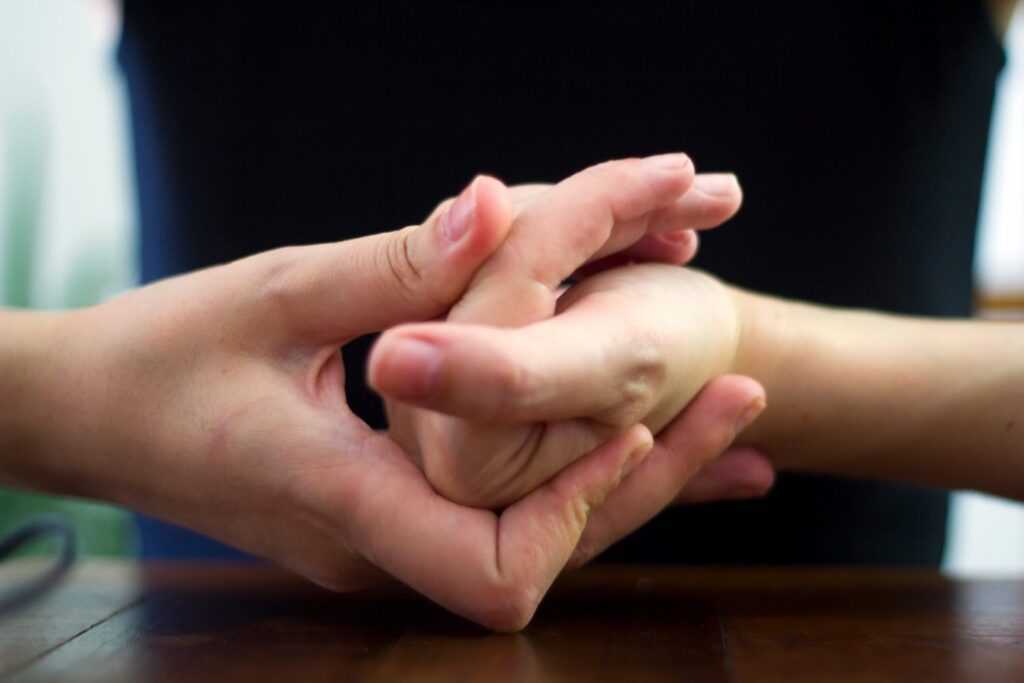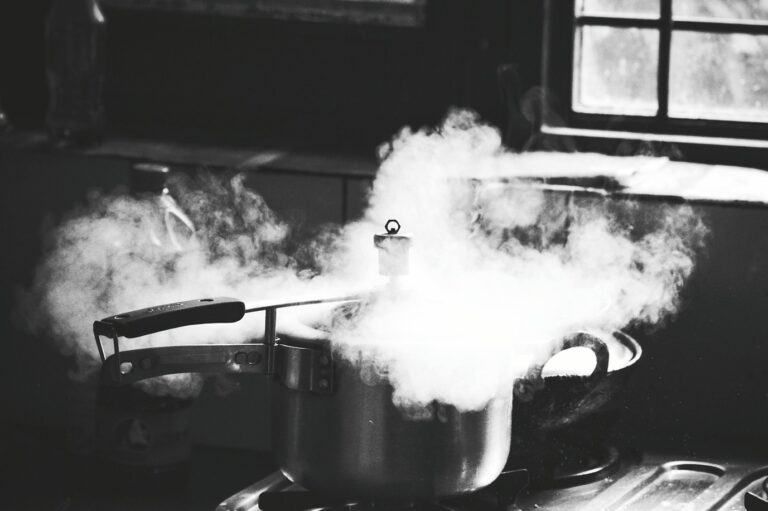This may be one of the most frequently asked questions, and everyone asking is worried, whether the cracking or popping sound coming from their joints is something serious, is it a sign of joint damage or degeneration?
Also, related to this is an old belief that cracking your knuckles or other joints will lead to arthritis.
Let’s see the truth behind these beliefs…

Sitting on a chair for a long time, you just take a deep breath of relief in between to take a break. You interlock and stretch your knuckles, a popping sound comes. You then twist your spine in both directions for more such sound and then twist your neck to release the sound.
But a lot of people start getting worried, if doing this is fine in the long run, or is it harmful, or may even lead to arthritis as many people say. It’s an activity which virtually all of us do, and enjoy to an extent because it helps release tension. But it is also annoying for a lot of people.
All the cracking and popping sound which we get, after we ourselves manipulate certain joints in a body, or it happens involuntarily when we perform any movement, like a squat, or just by moving from a stationary position, actually comes under the term “Articular Release”. Because it is poorly understood even in the medical community, most people either ignore it completely or they remain worried and consult a doctor or anyone for a general advice.
Acc. to a 2002 study: “Articular release is a repeatable phenomenon that can occur with or without an accompanying noise. It causes a freeing of motion and a release of joint tension. However, the physiologic and anatomic explanation for what happens during articular release is not fully understood. The sound, or the noise, is what people notice in articular release; the subjective relief it provides is secondary.”
Also, such articular releases are also part of the manipulations done by osteopaths, chiropractors and massage therapists, in which the patients feel an immediate release and relief, as well as temporary restoration of joint motion. The articular crack occurs for patients in both healthy and diseased states. It can be heard during normal functioning. Either a trained examiner or an untrained person can induce it.
In the medical literature, articular release, has been referred to under various names: “articular crack,” “articular pop,” “clunk,” “crepitus,” “joint click,” “snap,” “synovial grind,” and “thud,” a “grating” sound etc. This release may accompanied by a joint sound or may even be inaudible.
Researchers found that, it is uncertain whether there is any therapeutic value attached to the crack and, conversely, whether there are any detrimental effects to the patient. But many theories have been proposed as to the reasons behind this noise.
- Clicks result often from atmospheric pressure correcting a vacuum produced by the traction, or by tendons snapping over.
- The click is due to the breaking of the joint seal, at which time a small bubble of nitrogen is released in the joint.
- The facet joint space narrows, causing the synovial fluid to be pushed into an already bulging capsule.
- The noise may result from by-products of muscle activity, such as creatinine phosphate and creatinine kinase, being extruded when the muscle stretches during joint manipulation
The articular noises made by a joint vary depending on the size of the joint, section of the body being moved or manipulated, and the previous activity of the joint. A release or crack will not occur without motion. Also, the articular sound will vary from joint to joint. The noise released from a knee joint should sound different from the noise released from a joint in the cervical, thoracic, or lumbar vertebrae.

The study found that, the mechanism producing sound as a result of articular release was due to the production of a momentary partial vacuum produced by joint separation. The contents of this vacuum are thought to contain water vapor, nitrogen, oxygen, and carbon dioxide under reduced pressure. The synovial fluid in a joint is composed of 15% gas, 80% of which is carbon dioxide. The pressure in a joint right before release is –3.5 atm. Atmospheric pressure is 1 atm. Consequently, a 2.5– atm pressure change occurs after joint release, resulting in an audible emission of sound.
Some researchers have described the concept of cavitation, a term used to describe the formation of vapor and gas bubbles within fluid through local reduction in pressure. cavitation is said to be responsible for the phenomenon of joint cracking. Under sub-atmospheric pressures, the synovial fluid vaporizes and gas is released from solution. The collapse of the vapor cavities gives rise to the articular noise. The occurrence of such a noise is dependent on the joint space. The larger the joint space, the less likely the joint will pop. The smaller the joint space, the more likely it is that the articular release will be audible
A joint does not have to be pushed past a barrier forcefully to effect an audible release. A joint can exist in a state of static equilibrium—meaning that if a joint were to remain immobilized (at rest), the gaseous contents in the joint will build up to produce a sound when motion is induced. An audible release may also occur when a joint is already in motion, such as during an indirect or direct treatment of the muscle.
A study, suggested that, “Knuckle cracking, the sound accompanying the articular release of the joint, has attracted the attention of researchers since the early 1900’s. Some of the earliest comprehensive studies on cracking of the joints established that all joints cannot be cracked and that joints once cracked cannot be cracked again for approximately 20 minutes. However, interestingly the source of the cracking sound during articular release continues to be debated.”
During articular release, the articulating surfaces spring apart rapidly past the normal physiological range. This rapid motion of joints sets up vibrations in tissues leading to the cracking sound. Researchers ascribed the sound to the sudden tightening of the fibrous capsule about the joint during articular release.
Later researchers concluded cavitation and the subsequent collapse of cavitation bubbles in the synovial fluid as the source of the cracking sound. Cavitation as the source of the cracking sound was widely accepted for over 40 years, until researchers challenged this view recently by providing new evidence for the persistence of gas bubbles in the synovial fluid long after the cracking sounds were observed. They hypothesized that tribonucleation-mediated sudden growth of bubbles and not their collapse was responsible for the sound.
The recent hypothesis of tribonucleation-mediated cavity inception as the source of the cracking sounds cannot explain the observed magnitude of the sounds, suggesting the need for more detailed studies to resolve the origin of sounds during knuckle cracking.

Acc. to Dr. Robert H. Shmerling, from Harvard Health Publishing, “the “cracking” of knuckle cracking seems to be produced by increasing the space between finger joints. This causes gas bubbles in the joint fluid to collapse or burst. It’s a bit like blowing up a balloon and then stretching the walls of the balloon outward until it pops. The reason you can’t crack the same knuckle or joint twice right away is that it takes some time for the gas bubbles to accumulate again in the joint.”
The articular release or the cracking & popping sound in most cases as we saw is asymptomatic and harmless. But in some cases, when accompanied with pain and discomfort, can be a cause of concern, or indicate a serious underlying problem. It can be an indication of arthritis, patellofemoral syndrome (runner’s knee), a tear in the ligament/meniscus/tendon. If there is an associated pain or swelling with the cracking & popping noise, please immediately visit your ortho for consultancy. It may be general vitamin D deficiency, or it may be something more severe. But if there is continuous pain, first step is an orthopaedic consultancy.
Acc. to Dr. Robert Shmerling, “the origin of most joint noises, such as popping sounds or cracking of the knees when squatting, is uncertain. They may come from the kneecap rubbing on the bones below, or a tendon sliding across an irregular surface. However, in the absence of pain, swelling, or other joint symptoms, these sounds are probably nothing to be concerned about, and there is no reliable way to silence them.”
DOES POPPING THE JOINTS LEAD TO ARTHRITIS?

A research team,studied the effect of habitual knuckle cracking on joint health. Researchers found that, Knuckle cracking (KC) is a behaviour that involves manipulation of the finger joints that results in an audible crack, and it is often done habitually. The behaviour can become habitual because of immediate joint tension release and increased joint range of motion. Researchers, for the study, analysed 215 participants (135 patients suffering from osteoarthritis, 80 controls).
When examined in aggregate, the prevalence of osteoarthritis in any joint was similar among those who crack knuckles and those who do not. When examined by joint type, knuckle cracking was not a risk for osteoarthritis in that joint. Thus, a history of habitual knuckle cracking—including the total duration and total cumulative exposure— does not seem to be a risk factor for hand osteoarthritis.
Another study, found that, there is agreement in the literature regarding the formation of a bubble as part of the mechanism of knuckle cracking; however, the process by which the bubble is formed and the source of the cracking sound is not clear. The evidence for the association of knuckle cracking and osteoarthritis comes mainly from observational studies that have failed to show an association.



